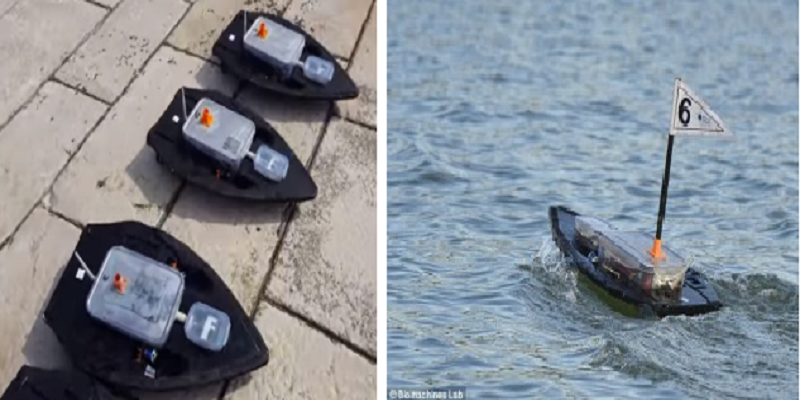
To understand how robot swarms work, think of a flock of birds: each individual is aware of its immediate neighbors, with which it instinctively coordinates its behavior. A team of researchers at Portugal’s University Institute of Lisbon and University of Lisbon has been working on the development of robot boat swarms that can participate in surveillance, environmental, and search and rescue missions at sea. Led by Dr. Anders Christensen, the team is developing the robots by using, of all things, Darwinian principles.
“First we generate a set of random brains, or controllers….At the beginning of the evolutionary process, the controllers are usually not very capable; in fact, some of them are terrible,” says Dr. Christensen. “But sometimes, they may be promising…so we take the controllers that perform better…and copy them, and make some random mutations. We then test the new controllers. We continue this process until we obtain a controller that is able to solve the task.”
It may not be “natural” selection, per se, but the concept is the same – a sped-up evolutionary process that results in a small fleet of ultra-capable robot boats that can operate autonomously using the “brains” that the researchers have programmed into them. Those brains are made up of a Raspberry Pi 2 computer plus a compass, GPS and Wi-Fi, and they act, essentially, like the brains of birds flocking together or fish that swim in schools. The robots are only aware of the boats immediately around them, but that awareness makes them react to their neighbors in key ways – if one boat moves into the other’s space, that second boat moves out of the way. Even more importantly, if a boat stops functioning, its neighbors will automatically move in to take its place.
The boats themselves are built using 3D printed parts and CNC-machined polystyrene foam, and they cost only about $330 each, which means that hundreds or even thousands of them could potentially be produced for naval missions. They are pre-programmed with specific goals, but then they’re on their own. Once they’re sent out into the sea, they must coordinate with each other to navigate, disperse, and otherwise cooperate to fulfill their mission.
You can find the preliminary study here. Dr. Christensen and his team are not the only researchers working on the development of robot swarms; the technology is also being studied for architectural applications and other purposes. Robot swarms are an amazing technology that could potentially save lives or just make lives a lot easier, but you have to admit – they’re still a little bit frightening. Take a look at the video below: it’s fascinating stuff, but those circling, swarming robot boats are just a touch creepy, as well. Discuss this new technology in the Portuguese 3D Printed Robotic Boats forum over at 3DPB.com.
[Images: Biomachines Lab]